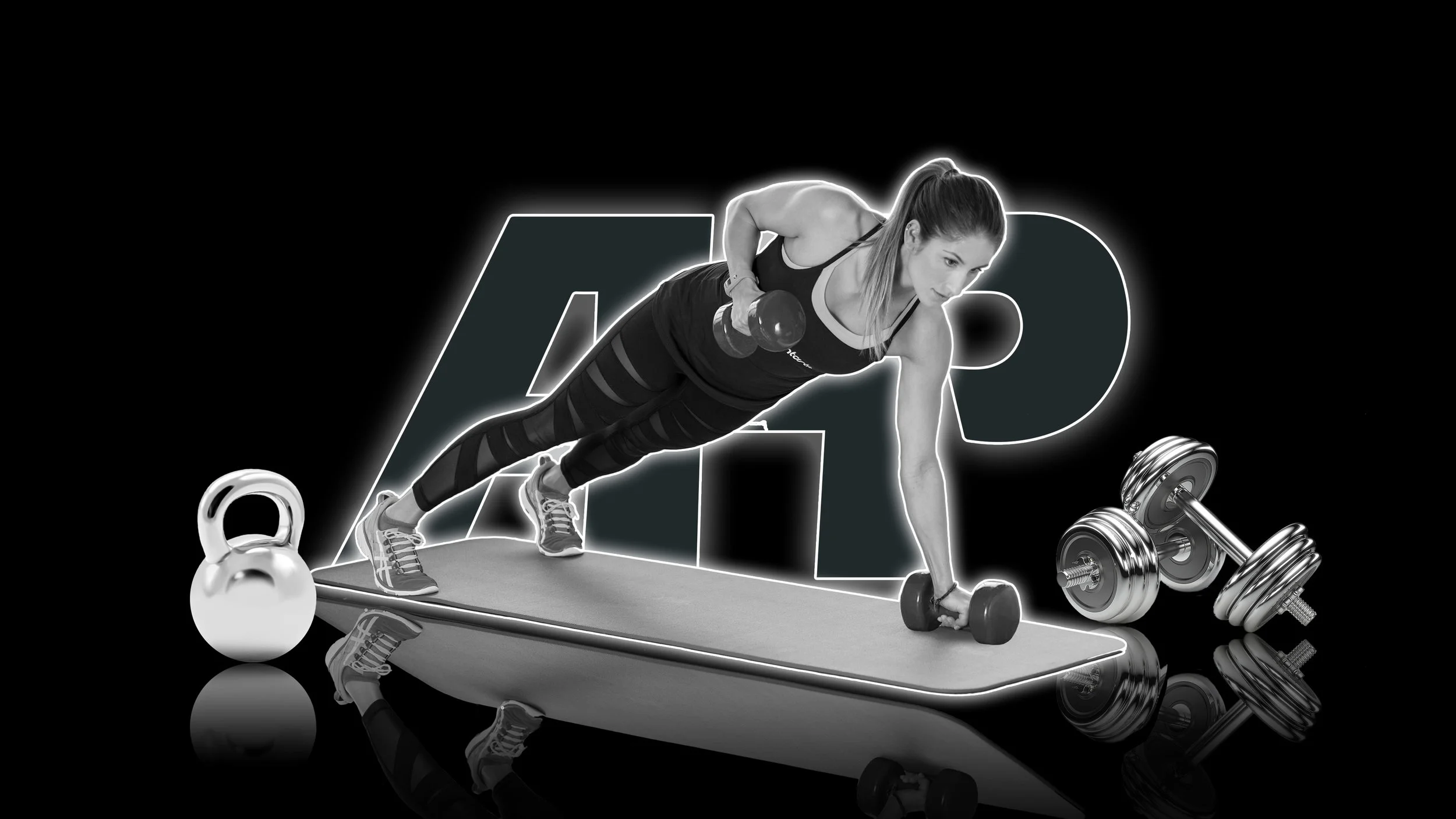7 Eccentric Landmine Methods For Strength & Size
Dr. Joel Seedman, Ph.D.
The research is clear on what it takes to build muscle mass, improve functional strength, prevent injuries, and preserve joint health - simply, emphasize a movement’s eccentric or lengthening phase. Furthermore, overloading the eccentric phase of strength movements appears to have additional benefits for maximizing strength, size, and performance.
Unfortunately it’s not always easy to apply additional eccentric overload to basic movements particularly in a safe, efficient, and practical manner. It’s for this reason I’ve developed numerous eccentric accentuated training protocols over the years and written many articles about these including BANA 2:1 method, PREP method, partner eccentric manual tension method, eccentric potentiation pivot press, table top squeeze press, supramaximal negatives, KBox method, eccentric accentuated push press, eccentric overload pushups, compound isolation drills, biomechanical drop reps and more. See article links for more on each.
With that said, over the last year I’ve been experimenting with a number of ways to apply eccentric overload to landmine exercises (read more about landmine exercises here). The outcome has been very successful and rewarding to say the least as I’ve found multiple ways to safely and effectively combine the two modalities. Here are 7 of my favorite eccentric overload landmine protocols highlighted in over 20 exercises and movements.
Eccentric Accentuated 2:1 BANA Landmine Exercises
One of the most simple yet effective methods for applying eccentric overload without the use of a spotter or advanced tools is using the (BANA) bilateral assisted negative accentuated training protocol (AKA up with 2, down with 1 protocol) applied to the landmine station. Essentially what you’re doing is performing the concentric phase of the lift with 2 limbs and the eccentric phase with 1 limb, thereby providing greater eccentric overload during the eccentric or negative movement. Think of these as self assisted negatives.
Although I’ve highlighted many BANA 2:1 variations over the last few years, the landmine variations are particularly joint friendly, simple, and effective. Here I’m demonstrating 4 variations alongside several of my awesome clients, Ben Lai and Leslie Petch, as we showcase bent over rows, chest presses, single leg squats, and overhead presses, all using the BANA eccentric accentuate 2:1 method. Just be prepared to brace the daylights out of your core as the unilateral eccentric overload phase of each rep requires extreme anti-rotation strength and core stabilization not to mention full body strength and motor control.
Landmine Eccentric Chest Fly & Press
One technique that’s incredibly simple yet effective for employing eccentric overload is the compound isolation method or biomechanical drop rep technique. Essentially you perform an isolation movement for the eccentric phase of the exercise then immediately transition to a stronger compound movement position for the concentric phase. Here I’m demonstrating alongside my awesome client and national level figure competitor Leslie Petch 2 landmine variations by performing a chest fly on the eccentric phase and chest press on the concentric phase.
The idea is that since the muscles can produce 20-35% more force during the eccentric phase compared to the concentric, we simply alter the biomechanics of each phase to maximize the overload effect. This is done by performing the eccentric phase of the movement using a biomechanically disadvantageous position (i.e chest fly) while adjusting to a more structurally sound position (i.e. chest press) during the weaker concentric phase. Similar to a biomechanical drop set where the lifter alters their positioning once they fatigue mid-set to allow them to perform more reps (i.e. chest flyes followed immediately by chest presses with the same load), the biomechanical drop rep uses the same principle only applied mid-rep rather than mid-set. Hence the term biomechanical drop rep which ultimately maximizes eccentric overload.
The eccentric chest fly to chest press combo has several unique benefits.
First, this allows the lifter to incorporate supramaximal loads (greater than your 1RM) on the eccentric or isolation portion of the movement without the fear of not being able to complete the concentric movement. For instance, the heaviest loads I’ll use during landmine chest flyes is roughly 35 pounds, however in this video I’m using 45 pounds. This produces incredible mechanical tension and micro-trauma both of which are critical mechanisms of muscle growth.
Second, performing a chest fly immediately prior to each chest press repetition produces slight pre-exhaustion to the chest fibers thereby ensuring the chest is activated and fatigues more so than the triceps and shoulders during the subsequent chest press phase.
Third, most lifters use excessive range of motion during chest flyes by collapsing and using an exaggerated stretch in the bottom position. In reality, the optimal stopping point on a chest fly is a position where the triceps are approximately 1-2 inches above floor height. Besides the enormous eccentric overload, these versions using a small box help prevent the lifter from over-stretching in the bottom position and also act as a safety feature (to catch the arms) during the heavy supramaximal eccentric phase.
Manual Eccentric Tension Landmine Variations
One of the most simple methods for applying eccentric overload involves having a competent partner provide added tension during the eccentric phase of the movement. Here are 4 examples where I’m providing manual eccentric tension to several of my NFL and MLB pro athletes including Marcellis Branch, Austin Meadows, Haley Gist-Holden, and Julian Williams on chest presses, squat jumps, rows, and overhead presses.
Although this manual eccentric method can be performed using a number of methods such as on variable resistance machines as well as free weights, I’ve found that the landmine provides the perfect modality for providing manual eccentric tension. Here’s why.
Applying manual eccentric overload on free weight exercises such as barbells and dumbbells can be a bit tricky and oftentimes somewhat risky as it can be quite difficult to apply a force vector in a perfectly vertical fashion. As a result this can often lead to losing control of the movement unless the force is applied in just the right fashion. In contrast, this works quite well on machines and variable resistance pieces, however, there’s little if any stabilization involved therefore less proprioceptive feedback and muscle spindle activation. Additionally, variable resistance pieces involve more mechanical motions rather natural movement kinematics. In fact, applying eccentric overload on machines where the athlete is required to conform to a pre-determined path forced on the lifter by the machine’s fixed apparatus can be tough on the joints and connective tissue.
However, the landmine provides the perfect blend of both free weights and machines. That’s because the spotter simply has to focus on applying added eccentric overload through one central, single focal point anywhere along the barbell rather than worrying about balancing the anteroposterior force vectors. Simply put, it allows simple application of manual eccentric overload without loss of balance being an issue while still providing the stabilization elements and natural movement patterns of free weights.
Landmine Eccentric Pullover and Press
The pullover is one of the most effective upper body exercises not only for improving functional strength and size in nearly every upper body muscle but also for crushing the daylights out of the core. Unfortunately eccentric overload, one of the most effective hypertrophy protocols in existence, can be quite tricky to apply to pullovers. However, by performing the pullover and press combo with the landmine we can easily rectify this.
Essentially this setup as I show alongside my awesome client Leslie Petch allows the lifter to safely and effectively apply eccentric overload by simply combining two movements - the unilateral pullover and the unilateral floor press. This allows the lifter to employ supramaximal loading on the pullover (greater than 1RM for the pullover) and light submaximal loading on the chest press.
Similar to the above chest fly and press combo this protocol also relies on the biomechanical drop rep protocol. For instance I’m demonstrating the pullover with a 45 pound plate which represents approximately 20% more loading than I would typically handle on this same movement under normal conditions yet fairly light loading for the chest press as I would typically use a 45 and a 25 on the bar.
Besides crushing the entire upper torso and core with eccentric overload, this is also an excellent dynamic speed and power exercise for the upper body pressing muscles. Essentially you’re performing an explosive dead stop bench/floor press by firing the chest, shoulders, and triceps aggressively to over-come inertia and get the weight moving violently from the dead stop position. As a result you’re able to stimulate hypertrophy from the negative pullovers while simultaneously working on power output and torque with a relatively light yet explosive, pressing movement. Read more about eccentric pullovers here.
Offset Leverage Landmine with BANA Eccentric Overload
Over the last few years I’ve posted various articles and videos highlighting the offset leverage landmine method. Not only can it be applied to just about every foundational movement pattern but it also does wonders for teaching lifters how to deal with offset loading in a variety of ways. Read more about the offset leverage landmine method here.
What I’ve recently come to realize is that this method can easily combined with the BANA 2:1 protocol to efficiently create eccentric overload.
In fact, I’m actually somewhat proud of this protocol as it’s quite remarkable how perfect and effective of an eccentric accentuated training protocol it is. Let me explain.
While the eccentric accentuated BANA 2:1 method is one of the most effective self-assisted eccentric overload methods, you essentially have a slight break mid rep as you use the other limb to assist the unilateral side. For instance during the concentric phase of any standard BANA exercise (i.e. machine chest press), both limbs will work equally, essentially providing a form of rest.
The offset leverage landmine protocol on the other hand allows the lifter to focus predominantly on one side and really crush it with maximal intensity as the assisting arm can only provide very light and partial assistance on the concentric phase of the exercise rather than complete assistance. As a result both the eccentric and concentric phases end up being close to maximal effort rather than the concentric simply being a “throw away” portion of the movement that provides minimal stimulus. In other words, both the eccentric and concentric phases provide an ample hypertrophy stimulus.
The other reason this is so effective is the eccentric co-contraction element of the protocol which happens to be a critical component of optimal neuromuscular efficiency during all movement. It just so happens this method reinforces it. For instance, during the chest press, the assisting/non working arm is forced to snap into an aggressive rowing position to pull the arm out of the way. This in turn creates enormous lat activation and co-contraction of the chest and back during the eccentric phase. As a result this produces incredibly strong concentric contractions due to enhanced reciprocal inhibition where the back muscles fully release on the concentric. Simply put, it creates a slingshot effect or spring loaded mechanism that sets the lifter up for maximal concentric torque and muscle activation. This is a bit of a complex topic but its something I cover in a lot more depth in my book Movement Redefined.
Eccentric Landmine Overhead Shoulder Presses
When it comes to blasting the shoulders, chest, triceps, upper back, core, and upper body stabilizers in a joint friendly fashion, the landmine overhead press is tough to beat. By applying eccentric overload not only can we create enormous levels of upper body growth and strength gains but we can do so while sparing the joints. In this video I highlight 6 of my favorite eccentric overload landmine overhead presses alongside several of my awesome athletes and clients including national figure competitor Leslie Petch, NFL combine athletes Quentin Jones and Joe Horn, and NFL athlete and GSP sponsored pro Julian Williams.
The first variation I’m demonstrating is an eccentric accentuated push press with accommodating resistance in the form of band tension. The eccentric accentuated push press exploits all 3 key mechanisms of hypertrophy (muscle damage, mechanical tension, and metabolic stress) making it one of the most effective functional mass builders for the entire shoulder region including the deltoids, traps, and upper back. Simply perform a standard push press by using both your lower body and upper body simultaneously to drive the weight overhead then perform a controlled and accentuated negative by slowly lowering the barbell.
Because the load should be 15-30% be greater than what you would typically handle under strict press conditions, performing these with a controlled negative will further enhance the growth-inducing benefits of this exercise. Think of these as heavy negatives for the shoulders but instead of having a spotter help you lift the weight on the concentric phase, your legs will assist you instead.
In addition the total load should represent a supramaximal weight for what you would typically handle on a strict overhead press. Besides the direct hypertrophy stimulus these create, teaching your body to handle inordinately heavy loads with strict motor control and rigid body mechanics does wonders for enhancing strength and neuromuscular efficiency. As a result your numbers on just about every upper body exercise should dramatically improve which will have a direct impact on building enormous shoulders and a humongous upper torso.
It should also be noted that this negative accentuated push press is one of the few exercises that builds functional mass and strength while simultaneously improving explosive power throughout the entire body. That’s because the concentric phase of the movement addresses speed and power output by focusing on driving the weight overhead as powerfully as possible while the eccentric phase addresses hypertrophy and strength through accentuated eccentric work. Few if any exercises can claim to have such a well rounded plethora of benefits when it comes to performance and fitness.
The second variation shown by Leslie essentially relies on the same methodology only using a unilateral press instead of a bilateral one. Although the upper body hypertrophy stimulus is similar, the level of core and ab activation is through the roof as you’re resisting incredibly high lateral forces and rotational torque that want to twist and tilt your body.
The third variation shown by NFL combine athletes Quentin and Joe simply involves the BANA 2:1 method discussed above only in a kneeling fashion. This also emphasis core stabilization and motor control to a greater extent than the standing variation.
The fourth variation I highlight showcases the offset leverage landmine BANA 2:1 protocol which absolutely torches the shoulders not to mention the core. The converging motion involving a wider position in the eccentric phase and close position in the concentric top phase also feels incredibly natural on the shoulders and is very joint friendly.
The fifth variation shown by NFL athlete Julian Williams involves the brutal manual eccentric tension method shown above. Just make sure to communicate with your partner regarding the level of tension needed during the set.
Lastly, the sixth variation I show involves the eccentric KBox flywheel method which produces inordinately high levels of eccentric overload and deceleration forces the lifter must handle. This leads us to the final eccentric landmine protocol.
KBox Landmine Variations with PurMotion Attachments
Every once in a while I get a bit carried away experimenting with unique movement variations and exercise combinations. Sometimes they sound better on paper than they are in real life and other times they end up feeling even better than I could have imagined. My latest experimentation combining the PurMotion Wishbone and the Exxentric KBox falls into the latter category, as the movements felt remarkably smooth and natural yet brutally intense and effective on the targeted musculature. Here I’m demonstrating a few squatting variations and overhead presses alongside my awesome client and national figure competitor Leslie Petch. Read more about the Exxentric KBox here.
Although it looks a bit crazy the setup is surprisingly easy and user friendly. Simply anchor the KBox pulley to the mounted Wishbone (via any sturdy nylon strap) and you can literally perform a plethora of exercises. Just beware as these combinations produce unprecedented levels of eccentric overload, muscle damage, mechanical tension, and metabolic stress making them top tier options for eliciting functional strength and hypertrophy in safe and effective manner.
It should also be highlighted that these are probably the most joint friendly and spine friendly squat variations I’ve ever performed with the KBox. That’s not to say that the KBox is unusually harsh on the joints and spine, but simply that whenever intense eccentric overload is present particularly with vertical force vectors, there’s naturally going to be more tension to the surrounding structures. However, because of the unique angular force vectors involved with the Wishbone and landmine station, the muscles receive just as much stimulation and eccentric overload, albeit with less stress on the spine and joints.






















































